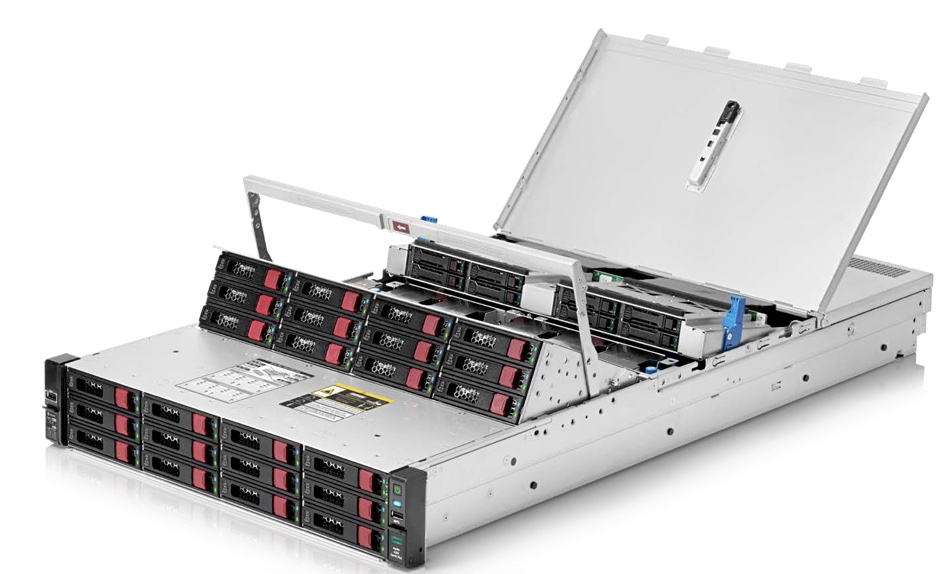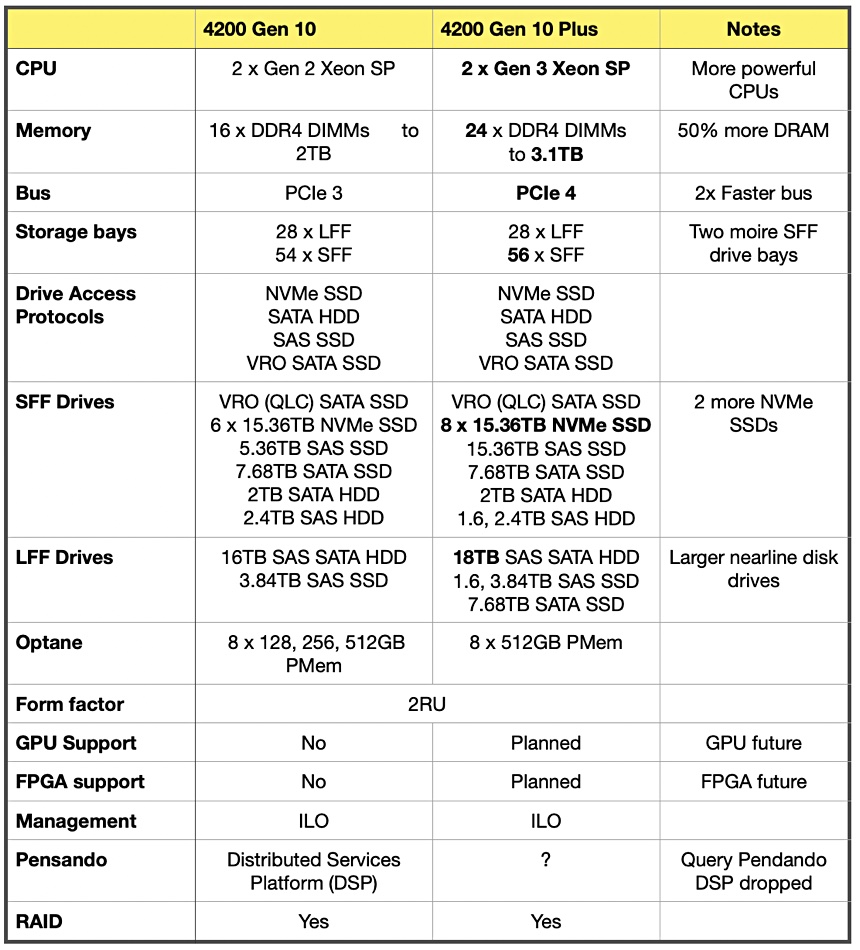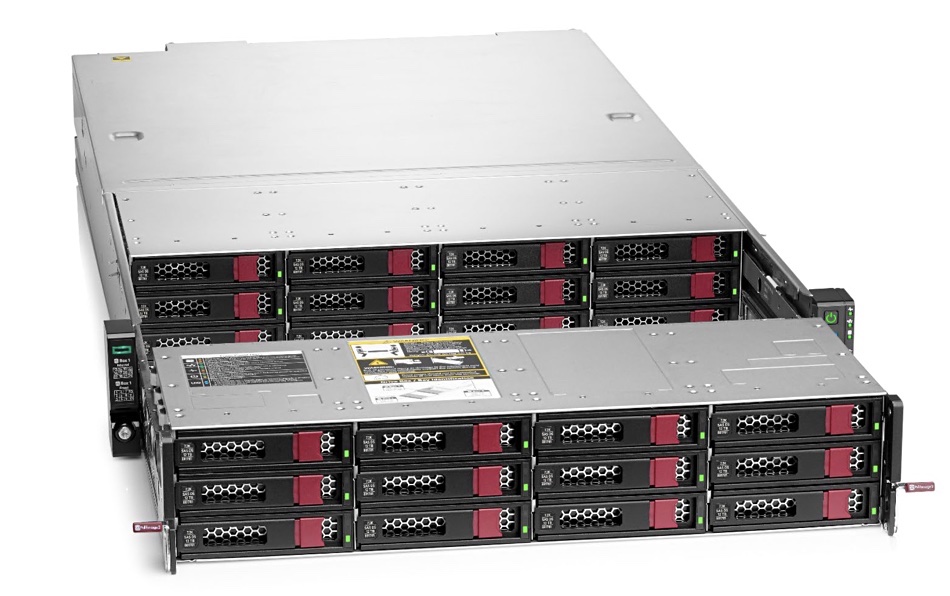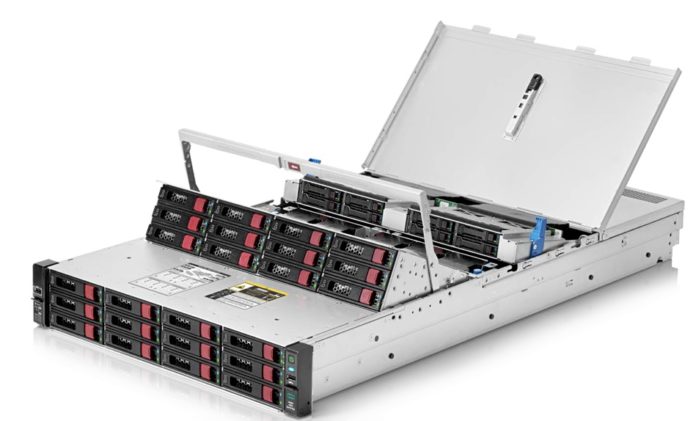HPE has added a Plus variant to its Apollo 4200 Gen10 server, adding updated Xeon CPUs, more memory and more storage capacity to make it more attractive to customers focused on AI and analytics.
The Apollo 4200 Gen10 Plus storage server is introduced in an HPE blog by the HPE storage experts team.
They write: “The HPE Apollo 4000 is built to accommodate both ends of the data-centric workload spectrum: from deeper data lakes and archives to performance-demanding analytics and AI/ML, data-heavy hyperconverged infrastructure (HCI), and cache-intensive workloads. The HPE Apollo 4200 Gen10 Plus data storage server is taking the Apollo 4000 family to new heights, with expanded capabilities and performance to augment the current portfolio.”

These HPE boffins emphasise that “This is not a replacement for the Apollo 4200 Gen10 system; the two will co-exist within the portfolio.”
Both 4200 Apollos come in a 2U rack shelf with two main rows of drive bays, one behind the other, and more optional drive cages at the rear. Large form factor (3.5-inch) and small form factor ( 2.5-inch) drive configurations are supported.
We did a quick comparison between HPE’s quick specs document for the Apollo Gen10 Plus and the equivalent Apollo 4200 Gen10 server quick specs and built a table to highlight in bold the main differences:

The main changes are updated gen-3 Xeons in the Plus 4200 as well as the use of the PCIe gen-4 bus. On top of that the 2TB memory maximum of the 4200 goes up to 3TB with the 4200 Plus.
Maximum drive capacities rise as well, with 16TB disk drives becoming 18TB drives, and 15.36TB SDS becoming 30TB ones. The Plus 4200 model can have eight NVMe SSDs instead of the base model’s six.

We haven’t seen any performance comparisons between these two Apollos. Our basic expectation would be that, if you swap out a 4200 Gen 10 for a 4200 Gen10 Plus, you could hope to get twice as much performance — if not more.
The Plus model has more-complicated rear drive cage options, which are detailed in the quick specs doc. The supported drive configuration list is far more extensive than before and interested readers need to check out the quick specs documents for these details.
Although GPUs and FPGA accelerators are not supported with the Plus model, this support is planned for the future.
All in all the Apollo 4200 Gen10 Plus storage server looks like a terrific performance advance on the base 4200 and comes with a useful capacity increase as well.
A minor note: the base 4200 supports the use of a Pensando DSP CPU offload processor. We couldn’t find a mention of this with the 4200 Plus and have asked HPE if it is still being used. Finally, this new Apollo is available throughout HPE’s GreenLake subscription scheme and supported by InfoSight predictive analytics.







